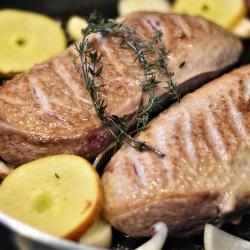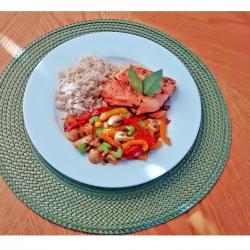Mastering the Art of Poaching: Eggs, Fish, and Beyond
Poaching, an age-old cooking technique, embodies the epitome of delicate artistry in the culinary world. Renowned for its simplicity and subtlety, poaching ensures that the intrinsic flavors of an ingredient shine through without the interference of fats or complex seasonings. As home cooks and professional chefs alike continually explore and refine this method, it’s evident that mastering the art of poaching can elevate everyday ingredients into exquisite dishes. This article delves into the nuances of poaching eggs, fish, and beyond, guiding you through this gentle cooking practice.
The Basics of Poaching
At its core, poaching involves cooking food by submerging it in a simmering liquid, typically water, stock, or wine. Unlike boiling, poaching requires a low and steady temperature—generally between 160°F to 180°F (71°C to 82°C)—to prevent violent agitation and ensure a tender final product. This meticulous balance of heat not only preserves moisture but also infuses subtle flavor nuances into the food.
Eggs: The Quintessential Poached Delicacy
One of the most iconic and often daunting tasks in poaching is perfecting the poached egg. The hallmark of a sublime brunch, a well-poached egg boasts a velvety yolk enveloped by a delicate, opaque white. The key to achieving this lies in fresh eggs and a few simple techniques:
-
Freshness Matters: Fresh eggs yield tighter whites that envelop the yolk neatly during poaching. To test for freshness, immerse an egg in a bowl of water—fresh eggs will sink, while older ones will float.
-
Vortex Technique: Bringing the water to a gentle simmer, add a splash of vinegar, which helps the egg white coagulate. Create a gentle whirlpool by stirring the water, and slide the egg into the center. This motion helps the white wrap around the yolk perfectly.
-
Timing: Cook for about 3 to 4 minutes for a set white and runny yolk. Remove with a slotted spoon and blot dry on a paper towel before serving.
Fish: Gently Poached to Perfection
Fish, whether a delicate fillet or a hearty steak, benefits tremendously from poaching. The method ensures moist, tender flesh while maintaining the fish's subtle flavors. Here are essential tips:
-
Choosing the Liquid: Opt for a flavorful liquid such as a court bouillon—a lightly seasoned broth that often includes aromatic vegetables, herbs, and wine. The liquid should be seasoned, as it subtly flavors the fish.
-
Temperature and Time: Maintain the ideal poaching temperature and use a digital thermometer to ensure precision. Fish typically requires 8 to 10 minutes of poaching, depending on the thickness of the fillet.
-
Presentation: Poached fish pairs well with a simple beurre blanc or a bright salsa verde, allowing the fish's delicate flavors to take center stage.
Beyond Eggs and Fish: Exploring Other Ingredients
Poaching extends beyond the familiar realms of eggs and fish. Here are additional ingredients that benefit from this gentle cooking method:
-
Poultry: Chicken breasts poached in broth remain moist and provide a clean palate perfect for salads or sandwiches. Adding herbs and spices to the poaching liquid enhances the flavor.
-
Fruits: Poaching fruits like pears or apples in spiced wine or syrup can transform them into elegant desserts, perfect for complementing cheeses or as a standalone treat.
-
Vegetables: Asparagus, artichokes, and other tender vegetables turn flavorful when poached just until tender in a seasoned broth.
Final Thoughts
Mastering poaching is a testament to restraint and precision in cooking. It’s about accentuating natural flavors rather than overshadowing them with complex techniques or ingredients. With practice and patience, the art of poaching can transform you into a confident cook capable of creating dishes that captivate with their simplicity and finesse. As with any culinary skill, the foundation lies in understanding the subtleties of heat, timing, and the inherent qualities of your chosen ingredients. In doing so, you'll bring forth a world of refined, flavorful delicacies that are as satisfying to prepare as they are to savor.





















